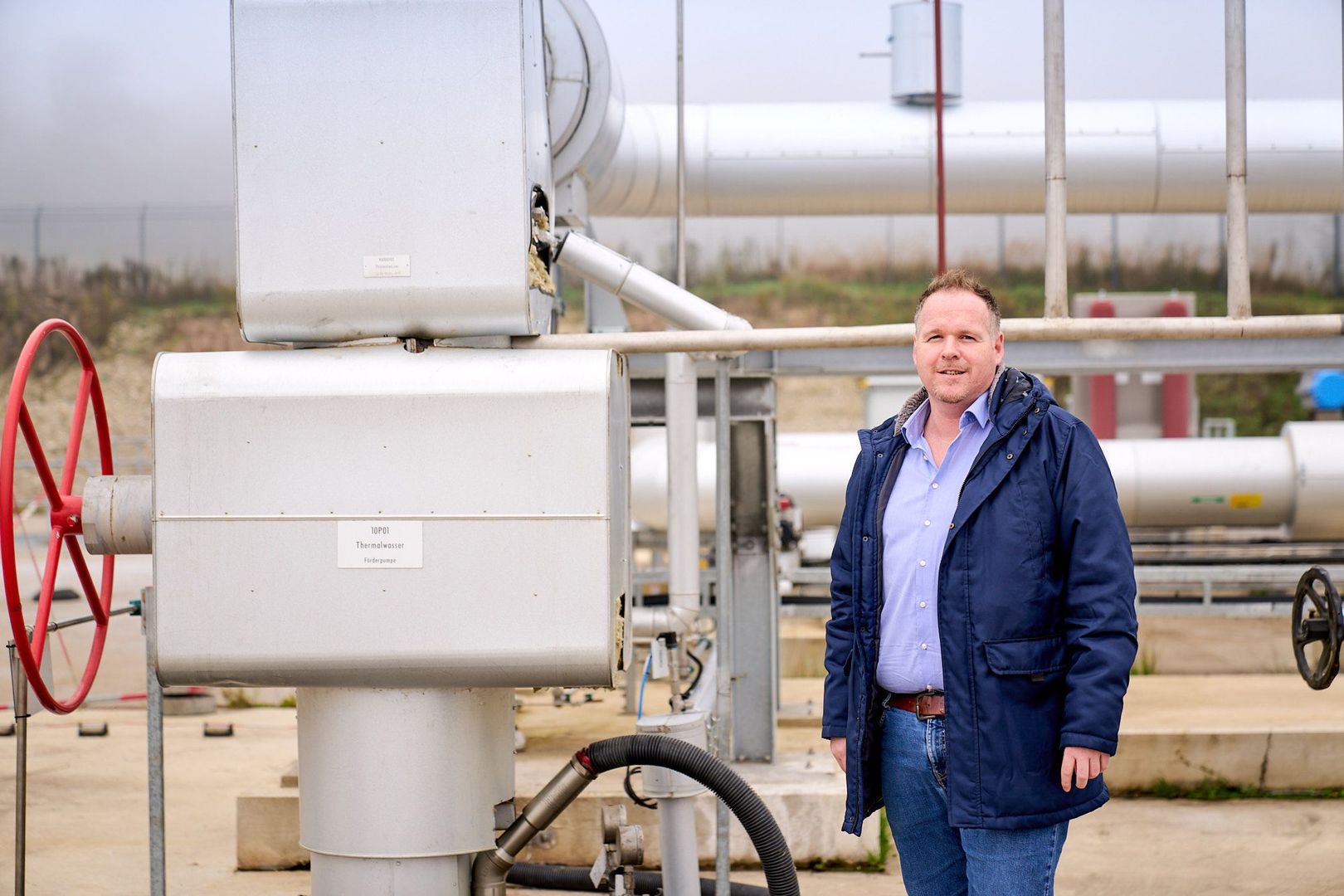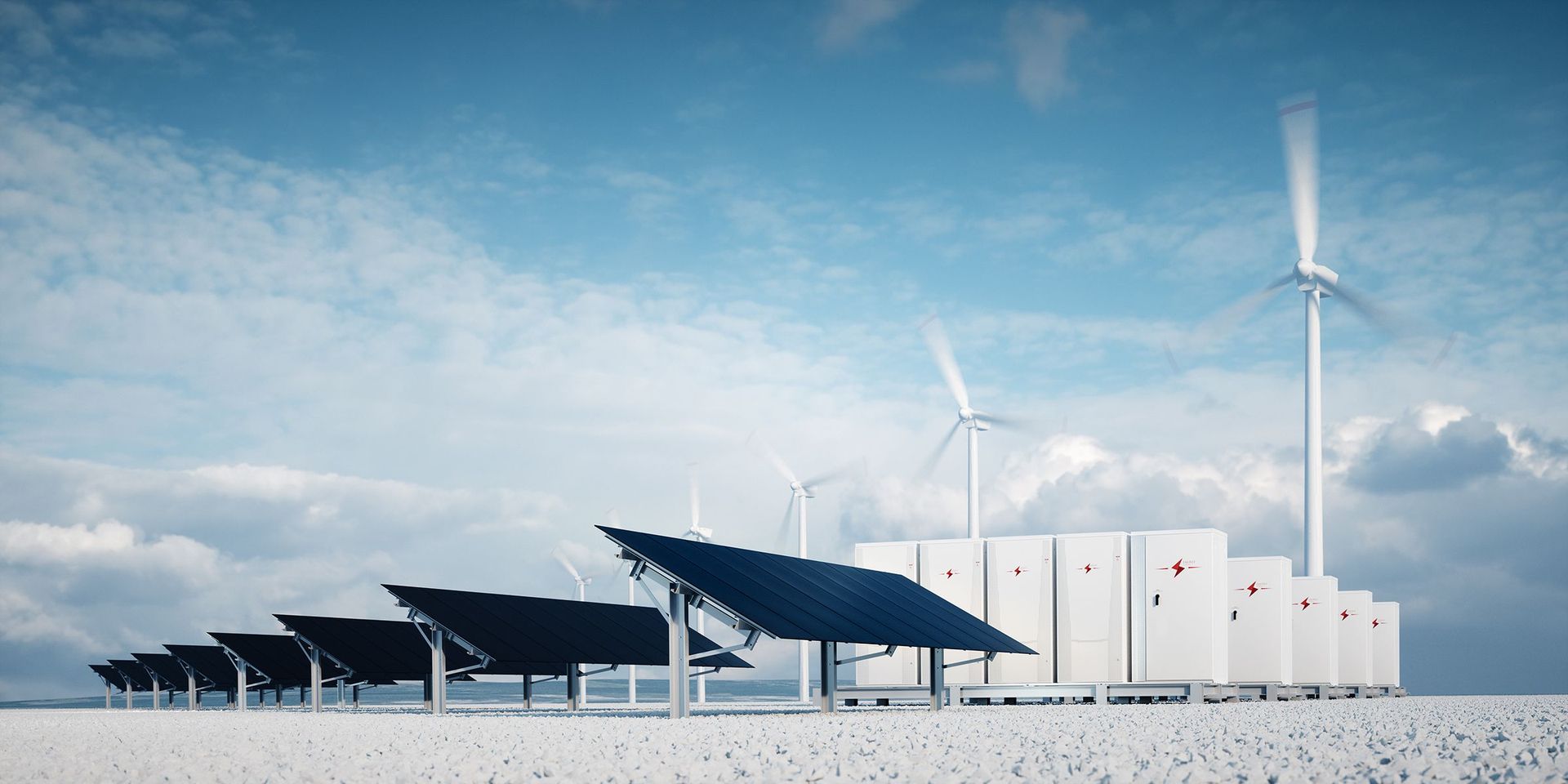First mover for the second half of the energy transition
The site of the geothermal plant near Garching an der Alz flashes and shines even through the early morning fog of the Bavarian plain. Everything is brand new, because the plant has only been feeding its electricity into the public grid since March 2021. As one of around a dozen megawatt-class geothermal power plants in Germany, the project is regarded as a pioneering example of energy generation from geothermal resources. The production well with a depth of almost 4,000 meters enables the extraction of 125 l/s of thermal water with a temperature of 123 degrees Celsius. These impressive numbers constitute the basis for the subsequent electricity and heat generation process.
Table of Contents

The ORC plant is a power generation plant with three circuits: In the first circuit, the hot thermal water is fed from the production well to the re-injection well via the heat exchangers. In the second circuit, thermal energy from the thermal water is absorbed via the heat exchangers and used to drive a turbine. The turbine in turn drives a generator, which produces electricity of up to 5.3 MWel. In the third cycle, water from the Alz Canal is used for cooling. The main advantage of the OCR plant is that the local resource of geothermal energy can be used efficiently - with a comparably high electricity generation and with a comparably low own electricity consumption. This not only takes into account the idea of producing energy in a sustainable way, but also represents a real innovation in geothermal energy.
With an output of 5.3 MWel max., the geothermal power plant supplies about 14,000 households with electricity without emitting CO2 or other pollutants. Shortly after commissioning, the plant availability at full load already reaches an astonishing 98% during some months.
For Christian Steinbauer of Silenos Energy, operator of the plant, it was quickly clear that the geothermal power plant should become part of a virtual power plant: "I have been following the development of virtual power plants with interest for some time. As a base-load capable plant that also has flexibility, geothermal energy complements many of the other energy sources in the electricity mix."
Even before the power plant was commissioned, Next Kraftwerke and Silenos Energy implemented the legally required remote control of the geothermal power plant, with the necessary technology integrated into the existing park controller. This enabled power trading on the spot market of the power exchange from the first megawatt hour that was produced and fed into the grid. "We requested and compared three energy traders, and Next Kraftwerke submitted the most economically attractive offer," adds Christian Steinbauer. He does not see any additional effort in working with a trader. "We report planned and unplanned outages of the plant, that's it. The billing and payment of the electricity fed into the grid is always punctual and correct, and the customer service is also easy to contact. We are very satisfied with the cooperation with Next Kraftwerke."
The next step towards full electricity market integration of the plant is to exploit the flexibility potential of geothermal technology. Because for the second half of the energy transition, it is not only the further buildup of renewable power capacities that is crucial - which, by the way, the Garching a.d. Alz geothermal power plant will also support through a planned significant expansion of capacity. A central task is also the replacement of fossil flexibility suppliers, which can keep the power grid stable in the event of frequency fluctuations. This is because it is precisely these fluctuations that will continue to increase with the strong expansion of volatile energy sources like wind and PV. "We have started the in-house technical tests for the provision of flexibility, specifically for balancing power (ancillary services). Both the submersible centrifugal pump at a depth of 600 meters and the turbine up here are flexible. We are now running tests to see whether we will regulate the full band of the pump or just a partial band. After that, we will hopefully soon be able to enter into the prequalification of the plant with the transmission system operators," explains Christian Steinbauer, not without referring to the complex energy industry and tax law requirements that are imposed on geothermal energy as a newcomer in the concert of renewables and that slow down some processes. Here, too, a lot of flexibility is required, if only proverbially.
Facts
| Turbine and generator capacity: 5.3 MWel max. | 5.3 MWel max. |
| Drilling depth of production and injection well (True Vertical Depth): | 3840m each |
| Length of well (Measured Depth): | 5000m each |
| Pipe diameter deep well: | 18 5/8" at ground surface and 8 ½ " open hole in reservoir |
| Flow rate: | 450 m³ / h |


